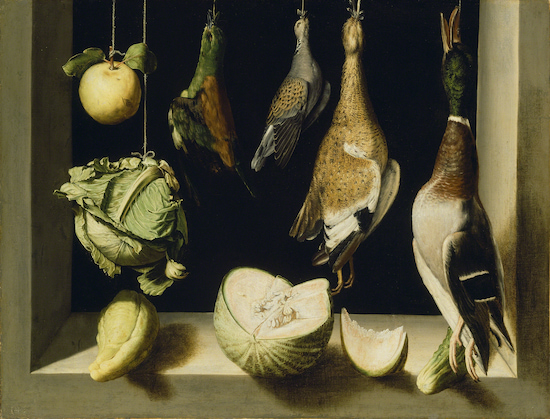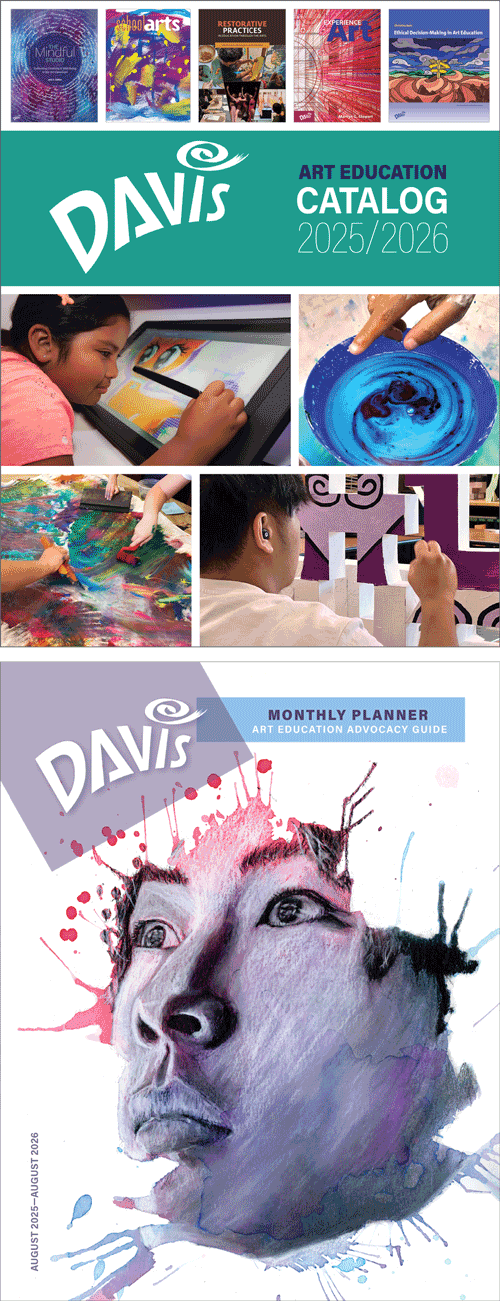Artist Birthday: Juan Sánchez Cotán
Juan Sánchez Cotán was a Spanish Baroque painter who helped popularize the still life genre in Spanish Baroque painting. Spanish Renaissance and Baroque art were greatly influenced by the realism of Flemish and Dutch painting of the period.
Artist Birthday for 25 June: Juan Sánchez Cotán (1561–1627, Spain)
Juan Sanchez Cotan is one of the earliest still life painters in Spanish Baroque art.
 |
| Juan Sánchez Cotán, Still Life with Game Fowl, 1600–1603. Oil on canvas, 67.8 x 88.7 cm. © 2025 Art Institute of Chicago. (AIC-6491) |
The still lifes by Juan Sánchez Cotán invariably depict commonplace foodstuffs in shallow niches whose dark interiors evoke the pantries (bodegones) of Spanish homes. Here the produce on the ledge and the quince, cabbage, and game birds hanging above appear precisely arranged in almost mathematical harmony. This type of composition—with the still life objects arranged in or hanging within a shallow niche—is typical of Sánchez Cotán's brief still life period. He stopped creating these austere compositions after 1603, when he dedicated himself to working at the Carthusian monastery of Granada (from 1612 until his death). The artist’s work was only rediscovered in the 1900s, in part through the efforts of August L. Mayer (1885–1944), a German art historian who helped reawaken critical interest in Spanish Renaissance and Baroque art and who once owned this painting.
Like Flemish and Dutch Baroque still life painters, Sánchez Cotán focused in his still life works on the transient aspect of luxurious food items, often presenting them already prepared, or ready for preparation. Like the Dutch Baroque "groaning board" still lifes, Sánchez Cotán's are a symbolic admonition against excessive consumption (gluttony, a mortal sin). In this way, the display of his still life objects against a dark void prompts the viewer to contemplate on each object in a spiritual context. The obvious reference is to the abundance that God provides human beings, and the omnipresent cabbage in Sánchez Cotán's still life paintings is a symbol (in the enfolding leaves) of divine protection. The inclusion of dead game birds in still life paintings—in both northern and southern European art—was a symbol of mortality and the transience of human life, an element of vanitas (vanity, vain pursuit of physical riches) another of the "seven mortal sins".
For all intents and purposes, the Spanish Baroque style in painting endured as the major aesthetic factor in Spanish painting until the very last twenty years of the 1700s. The tenebrism of Mannerism was maintained not for theatrical purposes, but for elevation of spiritual intensity. Influenced by northern Renaissance painting, Spanish Baroque painters also concentrated on meticulous replication of details from nature as much for the sake of virtuosity as for emphasis on the flawed nature of the physical world.
The fascination with the painting from the Netherlands and Flanders that began in the 1500s persisted through the 1700s. The Spanish kings were major collectors of Flemish and Dutch painting. It is little wonder, then, that the organization of highly detailed still life painting originated in Spain in the early 1600s, based closely on that genre from the Lowlands.
Juan Sánchez Cotán was born in Orgaz, Spain. He lived and worked as a painter in Toledo, where he is thought to have apprenticed to the Renaissance painter Blas del Prado (1545–1599). Blas' body of work was primarily religious mysticism, but he was also renowned in his time as a still life painter, although none of those works have survived. Sánchez Cotán learned the still life genre from Blas, and perfected it. It played a great role in his body of work until 1603. When Sánchez Cotán became a Carthusian monk in 1604, Blas' religious mysticism is evident in the many religious subject that Sánchez Cotán then favored.
Sánchez Cotán is considered one of the pioneers of Baroque realism in Spanish art. He is also the first Spanish painter with an extant (surviving) body of still life works. His attention to the visual relationships between still life objects is heightened by his articulate rendering of light and dark which imply volume. His still life works influenced later Baroque artists such as Francisco de Zurbarán (1598–1664).

Comments